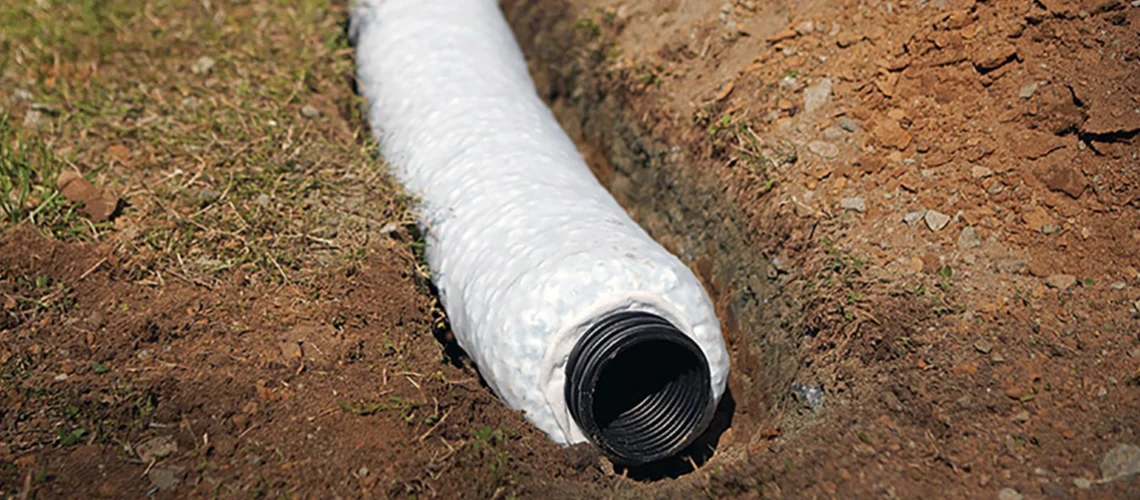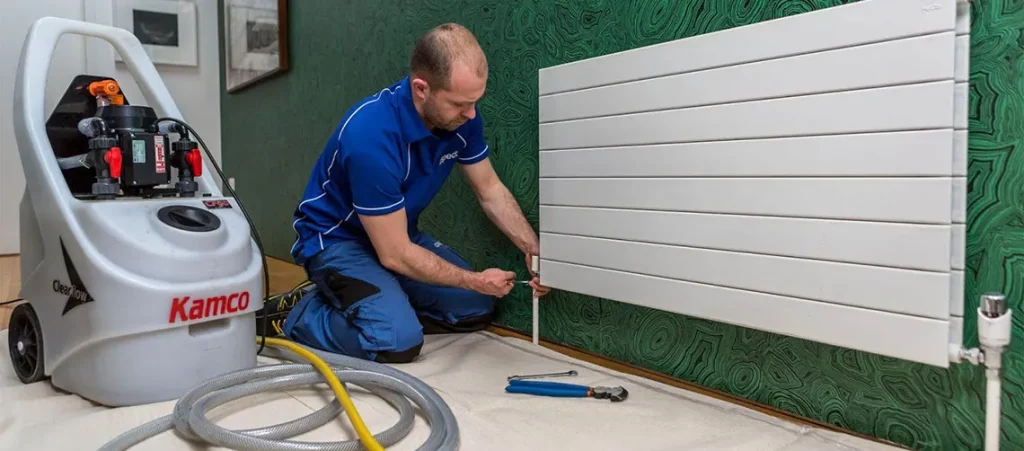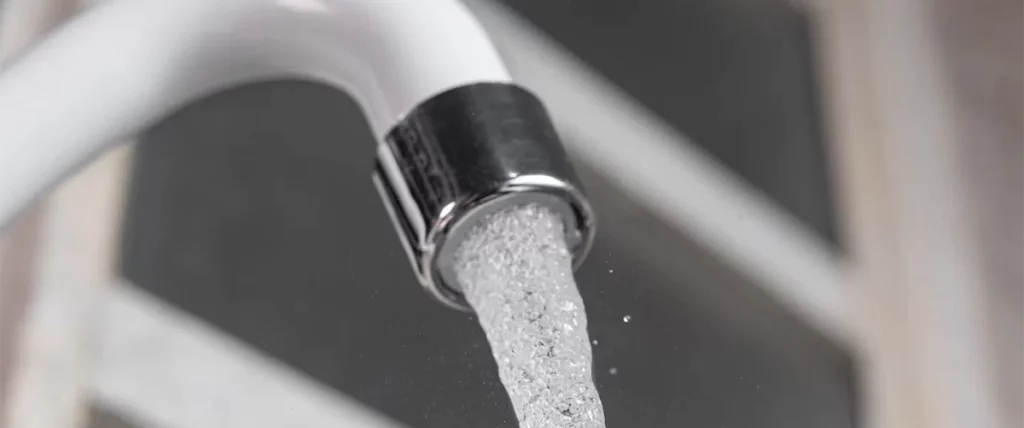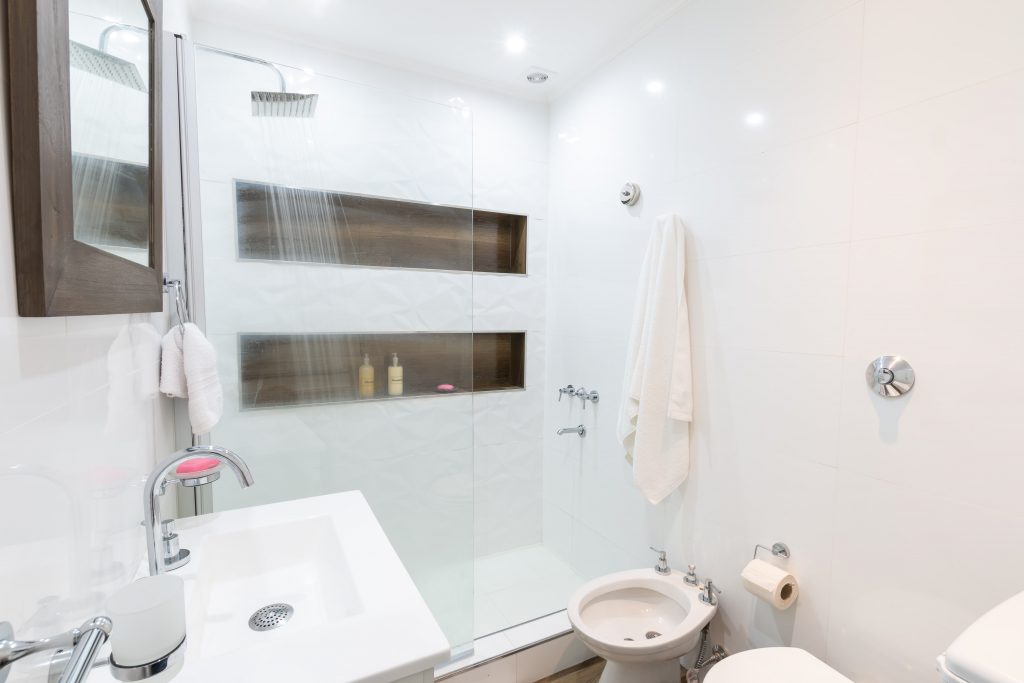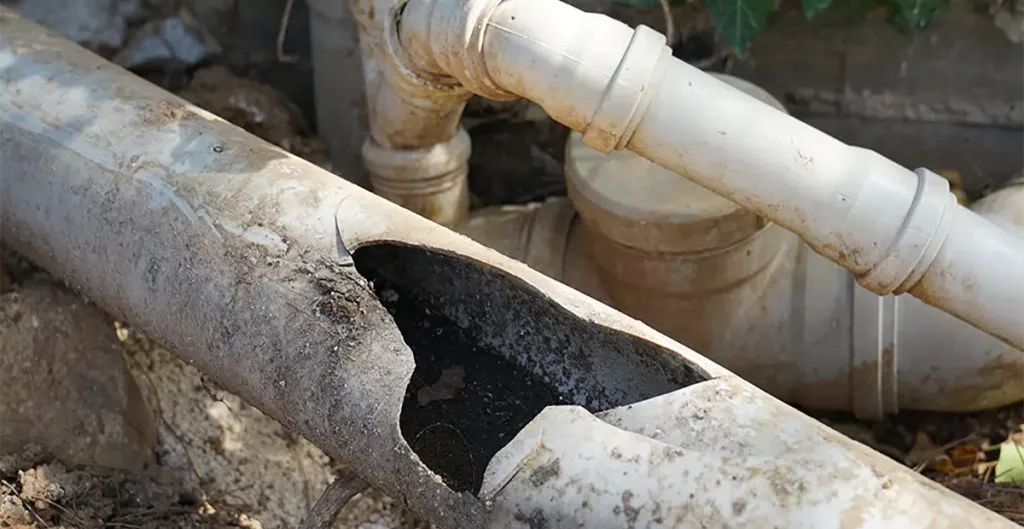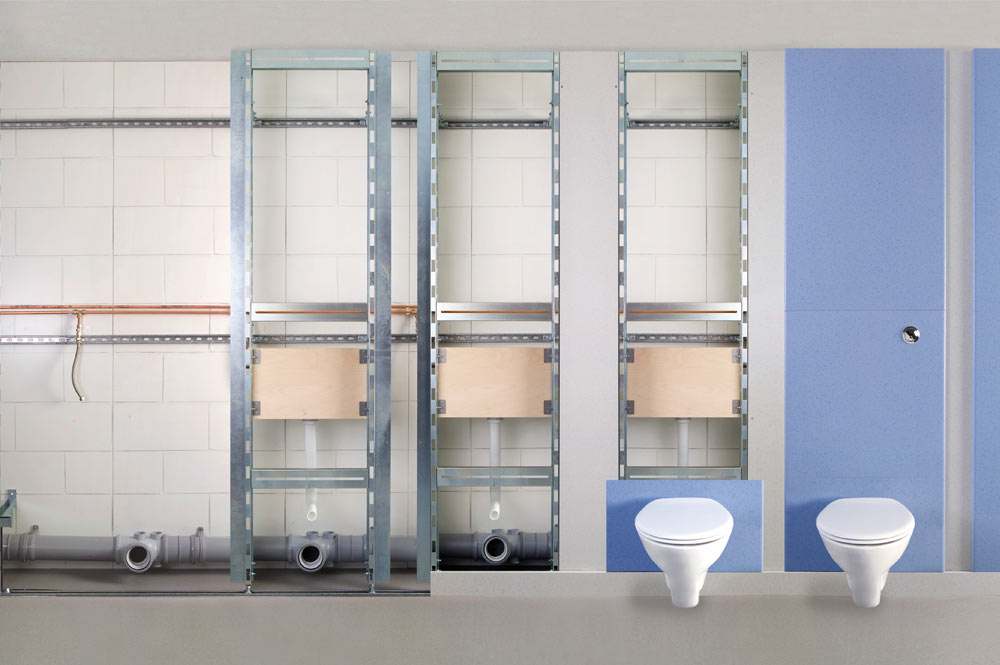French drains, named after an American farmer named Henry French rather than the country, are an essential tool for homeowners and property managers to manage groundwater and prevent water buildup around structures. But how do they fare in cold climates? Let’s dive into the details.
Contents
- 1 Why French Drains for Cold Climates?
- 2 Understanding French Drains are Suitable For Chilly Areas
- 3 Benefits of French Drains in Winter
- 4 Key Components of a French Drain
- 5 Installing French Drains in Cold Weather
- 6 Maintenance Tips for Winter-Ready Drains
- 7 Common Myths About Cold Climate Drainage
- 8 Comparing French Drains to Other Waterproofing Methods
- 9 Successful French Drain Solutions in Cold Areas
Why French Drains for Cold Climates?
Cold climates present a unique set of challenges when it comes to water management and drainage. These challenges are often compounded by the natural freeze-thaw cycles typical of these regions. French drains emerge as a favored solution to tackle these problems. Here’s why:
- Melting Snow and Ice: One of the major concerns in cold climates is the accumulation of snow and ice around a structure’s foundation. As temperatures rise and fall, this snow melts, creating potential pools of water that can damage foundations. A French drain helps redirect this melting water away from the foundation, preventing accumulation.
- Frozen Ground Issues: In winter, the ground often freezes, preventing melting snow and ice from being absorbed into the soil. Instead of being absorbed, this water can pool or flow in undesirable directions, such as towards a home’s foundation. French drains offer a pathway for this water, channeling it away and reducing the risk of flooding.
- Prevention of Ice Dams: Ice dams can form around foundations when water repeatedly freezes and thaws. These can cause significant damage to the structure. By managing and redirecting groundwater effectively, French drains can minimize the formation of these ice dams.
- Ground Heave Prevention: The freeze-thaw cycles can also lead to ground heave, where the soil expands upwards due to the freezing of moisture in the ground. This can damage foundations and landscapes. By reducing water accumulation, French drains can also mitigate the risks of ground heave.
In conclusion, the unique challenges posed by cold climates, from melting snow to frozen ground, necessitate effective drainage solutions. French drains, with their simple yet efficient design, offer an effective answer to these challenges, ensuring the safety and longevity of structures in chilly regions.
Understanding French Drains are Suitable For Chilly Areas
To comprehend why French drains are apt for cold regions, we need to break down their design, function, and interaction with the specific environmental conditions present in such areas.
- Basic Design and Functionality: At its core, a French drain is a simple yet ingenious system. It’s essentially a trench filled with gravel and a perforated pipe, which redirects water away from areas where you don’t want it. The design facilitates quick collection and redirection of water, minimizing pooling or accumulation.
- Dealing with Melting Snow and Ice: Cold regions often grapple with substantial snowfall. As temperatures fluctuate, this snow melts, potentially leading to large amounts of surface water. Here, the French drain acts as a conduit, guiding this meltwater away from critical areas like house foundations.
- Counteracting Frozen Ground: In chilly climates, the ground can freeze solid, making it impermeable to water. This creates a scenario where melting snow has nowhere to go, leading to pooling and potential flooding. French drains provide a designated path for this water, ensuring it’s led away from structures and other vulnerable areas.
- Minimizing Ice Formation: Water that pools or stagnates has a higher chance of freezing. This can lead to the formation of ice patches or dams, which can be hazardous and damaging. By facilitating continuous water flow, French drains reduce the chances of such ice formations.
- Mitigating Ground Heave: The repeated freezing and thawing of the ground can lead to a phenomenon called ground heave, where the ground swells upwards. This can threaten the structural integrity of foundations and landscapes. By managing and minimizing water accumulation in the soil, French drains can help reduce the risk associated with freeze-thaw cycles.
In essence, the suitability of French drains for chilly areas lies in their fundamental design, which addresses the unique water management challenges of such climates. When properly installed and maintained, they offer an effective and reliable solution to keep properties safe from water-related issues in cold regions.
Benefits of French Drains in Winter
The harshness of winter, with its snow, ice, and freeze-thaw cycles, can wreak havoc on properties without proper drainage. French drains, specifically designed to redirect and manage water, come to the rescue in such scenarios. Here are the key benefits of having a French drain during the winter months:
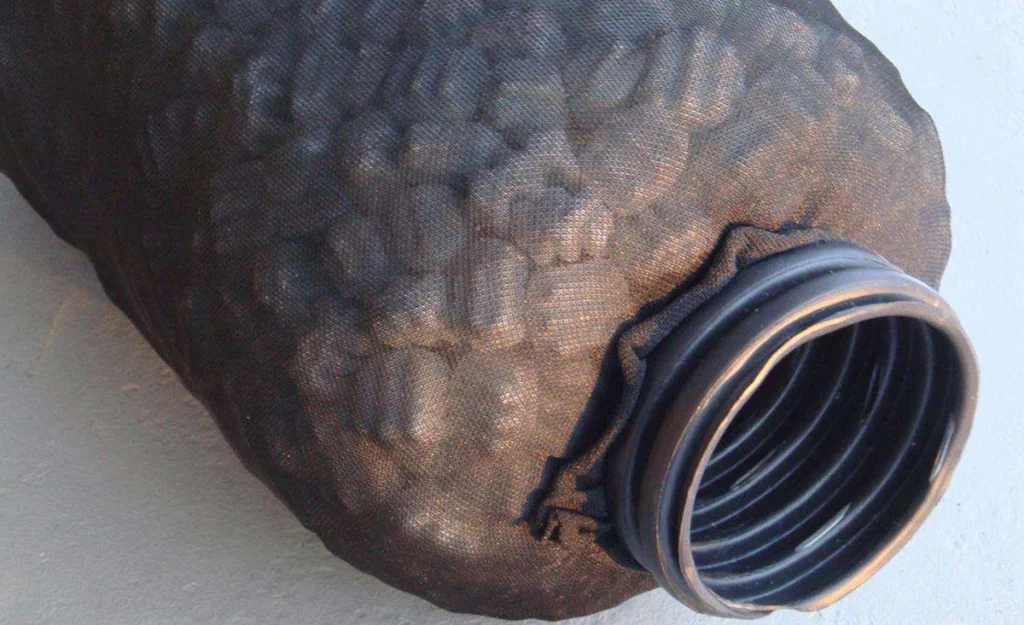
- Protection Against Flooding: As snow accumulates and then melts, it can produce a significant amount of water. If the ground is frozen, this water cannot be easily absorbed, leading to pooling. French drains effectively divert this meltwater away from your home, reducing the risk of flooding.
- Prevention of Ice Dams: Ice dams can form around foundations when water repeatedly freezes and thaws. By efficiently managing and redirecting groundwater, French drains can minimize the formation of these potentially damaging ice barriers.
- Reduced Soil Erosion: Water flow resulting from melting snow can erode soil, especially on slopes or hilly terrains. By directing water flow through a designated path, French drains can protect landscapes and prevent soil from being washed away.
- Basement and Foundation Protection: Excess water from melting snow can lead to basement flooding or moisture seepage into the foundation. French drains play a vital role in keeping basements dry and protecting the structural integrity of a property.
- Ground Heave Prevention: The freezing and thawing of groundwater can lead to ground heave, which can damage foundations and landscapes. French drains reduce water accumulation in the soil, thereby mitigating the risks of freeze-thaw cycles and associated ground movement.
- Safety: Stagnant water from melting snow can refreeze on pathways, driveways, or near entrances, creating hazardous ice patches. By channeling this water away, French drains enhance safety by reducing the chances of slip-and-fall accidents.
In summary, the benefits of French drains in winter are manifold, from safeguarding structural integrity to ensuring safety and aesthetic appeal. They offer a durable and efficient solution to manage the challenges winter weather can impose on properties.
Key Components of a French Drain
A French drain is a simple yet effective drainage system used to redirect groundwater away from areas where it might cause damage. Although its design might seem straightforward, each component plays a vital role in its overall functionality. Here are the primary components of a French drain:
Trench: This should slope away from the house or area you’re trying to protect.
Perforated Pipe: This sits at the bottom of the trench to facilitate water flow.
Gravel: Fills the trench, filtering and directing water into the pipe.
Filter Fabric: Encases the gravel, preventing dirt and debris from clogging the system.
Installing French Drains in Cold Weather
It’s ideal to install French drains before the onset of winter, when the ground isn’t frozen. However, if necessary, it can be done during colder months using specialized equipment to break through the frozen ground.

Maintenance Tips for Winter-Ready Drains
Proper maintenance of drains, especially before and during the winter months, is crucial to ensure their effective performance. Cold weather poses specific challenges, such as freezing and blockages from accumulated debris. Here are some maintenance tips to prepare your drains for winter and keep them functioning optimally:
Regular Inspection: Ensure the drain remains clear of debris like leaves or twigs.
Check for Ice Buildup: While French drains handle water well, ice can cause blockages. Ensure the outlet is free from ice.
Clean Out the Drain: In the fall, before winter sets in, it’s a good idea to clean out any sediment that might have settled in the pipe.
Common Myths About Cold Climate Drainage
Cold climates present unique challenges when it comes to water management and drainage. However, along with these challenges come misconceptions and myths. Debunking these myths is essential for effective water management and to avoid costly mistakes. Here are some common myths associated with cold climate drainage:

“Frozen ground doesn’t need drainage”: Melting snow can still produce a lot of water, even if the ground is frozen.
“Gravel will freeze solid”: While individual stones may freeze, the gaps between them usually remain open, allowing water to flow.
Comparing French Drains to Other Waterproofing Methods
While French drains are effective, they’re one of many waterproofing solutions. Sump pumps, for example, are another popular choice in cold climates, actively pumping water away from a property. Depending on the specific conditions, a combination of methods might be ideal.
Successful French Drain Solutions in Cold Areas
Many homes in cold regions like Canada, Northern US, and parts of Europe successfully employ French drains to combat water-related issues. A well-designed and maintained French drain can offer years of protection against the unique challenges posed by cold climates.
FAQ about French drains for cold climates
Ensure the drain is buried below the frost line, use larger gravel to promote better drainage, and regularly check for blockages to prevent water accumulation.
No, it’s not advisable to install a French drain in frozen ground as it can be difficult to excavate and may result in an improperly installed system.
In cold climates, a French drain should be installed below the frost line to prevent freezing, which typically means at least 4-6 feet deep, depending on the region. Always check local frost depth guidelines.



